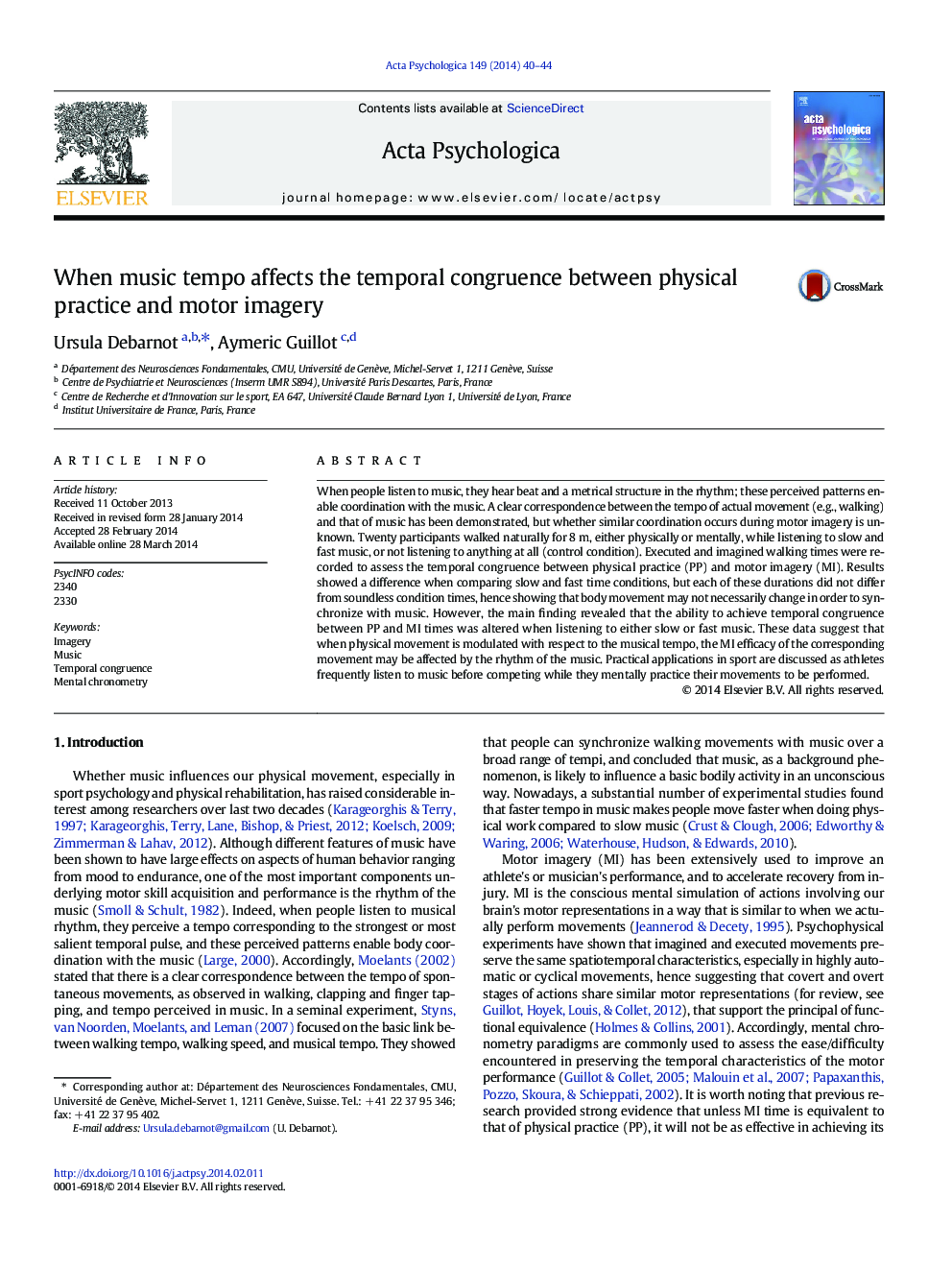| Article ID | Journal | Published Year | Pages | File Type |
|---|---|---|---|---|
| 7277646 | Acta Psychologica | 2014 | 5 Pages |
Abstract
When people listen to music, they hear beat and a metrical structure in the rhythm; these perceived patterns enable coordination with the music. A clear correspondence between the tempo of actual movement (e.g., walking) and that of music has been demonstrated, but whether similar coordination occurs during motor imagery is unknown. Twenty participants walked naturally for 8Â m, either physically or mentally, while listening to slow and fast music, or not listening to anything at all (control condition). Executed and imagined walking times were recorded to assess the temporal congruence between physical practice (PP) and motor imagery (MI). Results showed a difference when comparing slow and fast time conditions, but each of these durations did not differ from soundless condition times, hence showing that body movement may not necessarily change in order to synchronize with music. However, the main finding revealed that the ability to achieve temporal congruence between PP and MI times was altered when listening to either slow or fast music. These data suggest that when physical movement is modulated with respect to the musical tempo, the MI efficacy of the corresponding movement may be affected by the rhythm of the music. Practical applications in sport are discussed as athletes frequently listen to music before competing while they mentally practice their movements to be performed.
Related Topics
Life Sciences
Neuroscience
Cognitive Neuroscience
Authors
Ursula Debarnot, Aymeric Guillot,
